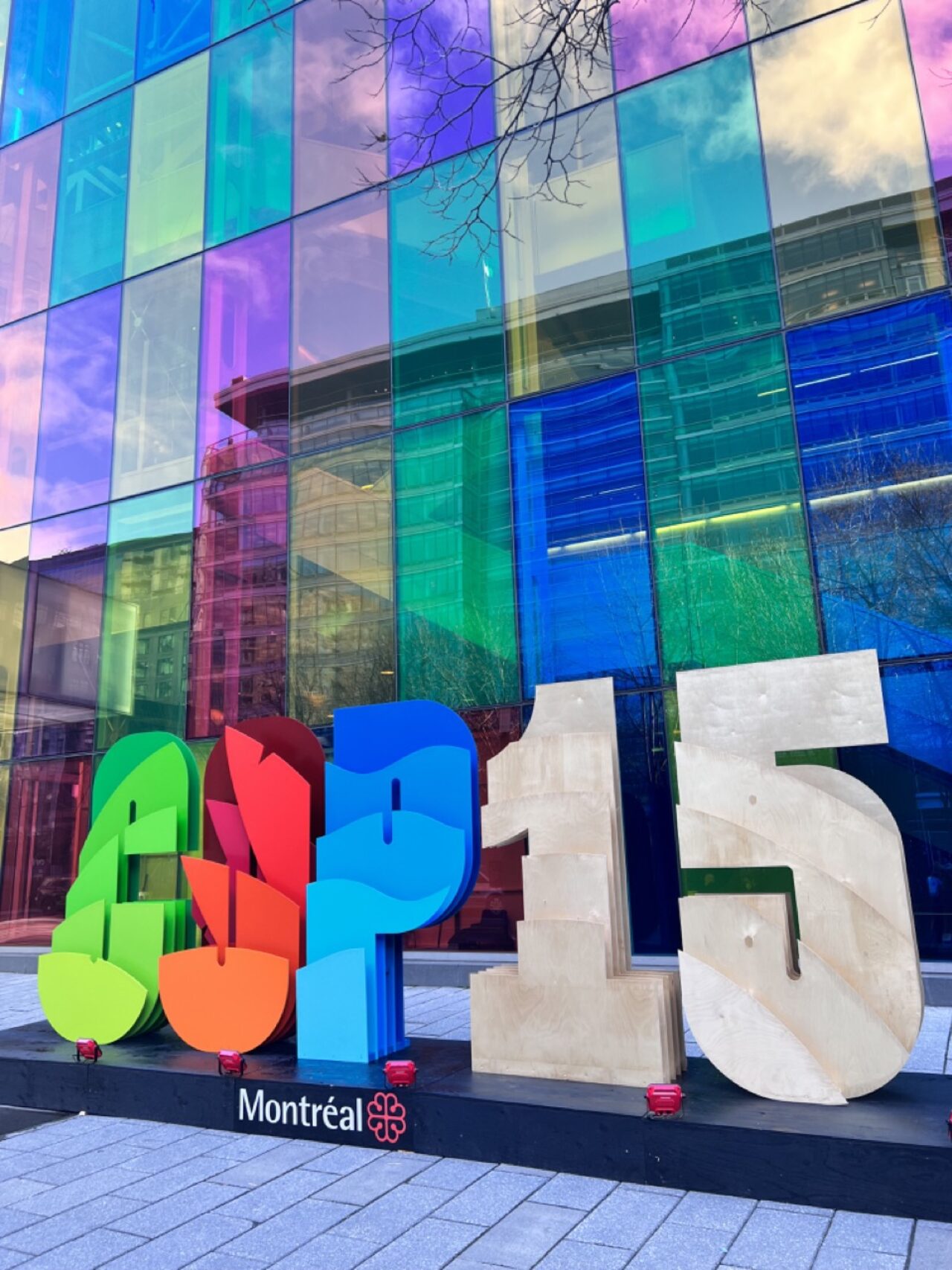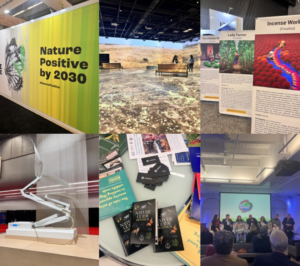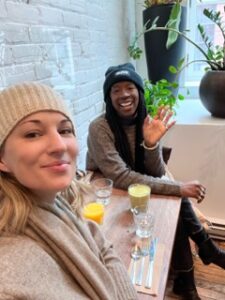ReWilders
Centre d'écologie urbaine de Montréal
29 Nov 2022

The 15th Annual Conference of the Parties to the UN Convention on Biological Diversity (or COP15) ends today. Our North American Lead, Mariah, attended the first few days of sometimes difficult, sometimes uplifting discussions in Montreal. If, like us, you’ve wondered what it’s like to attend an event like this but have yet been unable to attend, you can read her firsthand personal experience here…
[All references linked in italic bold]

COP15 felt different to others I have attended in the past. The energy was bustling as you walked through the main hall at Palais des Congrès de Montreal, the walls were lined with images of Nature – animals, ecosystems and bold statistics of where we stand. The attendees filling the conference rooms and pavilions were diverse in background, race and agenda, each with determined demeanours. Being a smaller conference, the space and energy felt more intimate and focused than COP27 earlier this year in Egypt, with more authentic opportunities to connect and learn.
As this conference solely focuses on Biodiversity, Nature is rightly at the center of all conversations. 196 countries converged to finalise a global framework with the aim to halt, and ultimately reverse, the current loss of biodiversity. As many of these countries failed to meet their targets laid out in the last agreement, the planet is experiencing the greatest biodiversity loss it has ever seen with nearly 1 million species globally at the brink of extinction. The key target – 30% of biodiversity to be protected by 2030 – is simply not enough. To meet this, stricter laws and policies will need to be enforced, as well as commitment to and investment in Nature conservation.
While these delegations are taking place, there are critical side events and discussions happening on the periphery. These are the moments where you can learn about the work that is getting done on the ground, and the tireless efforts of the scientists, local leaders, activists, non-profits, and indigenous communities. It is in these discussions that you understand the sense of urgency, the issues they face, and the small wins that keep them going.
Some important and positive takeaways that shined through the week are how vital indigenous communities are to the survival of biodiversity on this planet. 80% of biodiversity left on this planet is found on indigenous land. Their voices and teachings need to be at the forefront of every conversation and seated in every delegation. As well as a new kind of narrative for Nature, storytelling is key to getting to the hearts of people and helping facilitate change. Throughout COP, there were powerful moments of art, immersive experiences, and indigenous storytelling that helped to transform the conversation.
At times, the amount of information can feel very overwhelming and discouraging, and I began to question if a gathering like this is actually useful. It was a question that I began to ask other attendees when I would meet them, and they responded that coming together made them feel like they weren’t alone in this fight.
By hearing others’ stories and sharing their experiences, they felt seen and were able to exchange ideas, best practices, and inspiring experiences.
I came away with the feeling that we are always far greater together, and that at the heart of it we are Nature. Nature is us.

— Mariah, Voice for Nature
Follow @rewildyourself on Instagram and LinkedIn to hear more.

0%